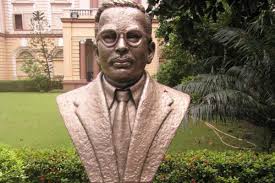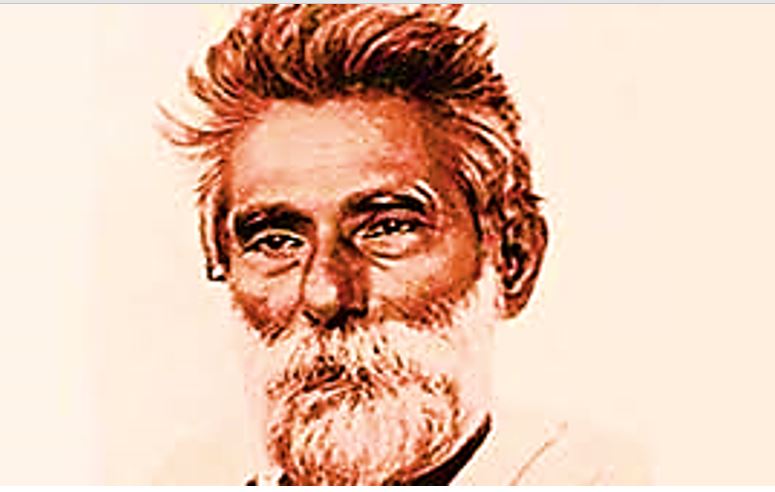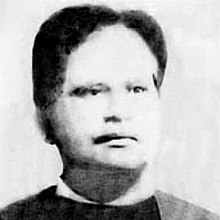হিন্দুকুশের দুইপারের ‘কম্বোজ‘
জাতির
ইতিহাস
প্রায়
৪০০০
বছরের। সেই
ইতিহাস
লিখতে
সব
প্রামানিক তথ্য
জোগাড়
করা
এক
দুঃসহ
কাজ। রাত
জেগে
যা
পারি
করছি। কম্বোডিয়া তে
৪
বার
ঘুরেও
বহু
ছবি
এবং
তথ্য
সংগ্রহ
করেছি। কিন্তু
ছবিও
সব
কথা
বলে
না। তাই
কেউ
কেউ
বলছেন
আমার
লেখা
অনেক
‘speculative’. ইতিহাস
অনেকটাই অনুমান
ভিত্তিক। ডাইরেক্ট প্রমান
যেখানে
থাকে
না
সেখানে
ইন্ডাইরেক্ট প্রমান,(
circumstantial evidence যা
আদালতেও গ্রহন
করা
হয়)
ছাড়া
উপায়
কি?কম্বোডিয়ার ইতিহাস
নিয়ে
যে
বইটা
আছে
আমার
কাছে
সেটা
ইংরাজীতে। তা
থেকেই
তুলে
দিলাম
কিছুটা। বাংলায়
তর্জমা
করে
নেবেন।
কেউ
যদি
করে
দেন
তাহলে
অনেকে
যারা
ভালো
ইংরেজী
জানেন
না
তারা
বুঝতে
পারবেন।
জাতির
ইতিহাস
প্রায়
৪০০০
বছরের। সেই
ইতিহাস
লিখতে
সব
প্রামানিক তথ্য
জোগাড়
করা
এক
দুঃসহ
কাজ। রাত
জেগে
যা
পারি
করছি। কম্বোডিয়া তে
৪
বার
ঘুরেও
বহু
ছবি
এবং
তথ্য
সংগ্রহ
করেছি। কিন্তু
ছবিও
সব
কথা
বলে
না। তাই
কেউ
কেউ
বলছেন
আমার
লেখা
অনেক
‘speculative’. ইতিহাস
অনেকটাই অনুমান
ভিত্তিক। ডাইরেক্ট প্রমান
যেখানে
থাকে
না
সেখানে
ইন্ডাইরেক্ট প্রমান,(
circumstantial evidence যা
আদালতেও গ্রহন
করা
হয়)
ছাড়া
উপায়
কি?কম্বোডিয়ার ইতিহাস
নিয়ে
যে
বইটা
আছে
আমার
কাছে
সেটা
ইংরাজীতে। তা
থেকেই
তুলে
দিলাম
কিছুটা। বাংলায়
তর্জমা
করে
নেবেন।
কেউ
যদি
করে
দেন
তাহলে
অনেকে
যারা
ভালো
ইংরেজী
জানেন
না
তারা
বুঝতে
পারবেন।
*********
“The history of Cambodia can be
traced back to at least the 5th millennium BC. Detailed records of a political
structure on the territory of what is now Cambodia first appear in Chinese
annals in reference to “Funan” a polity that encompassed the southernmost part
of the Indochina Peninsula during the 1st to 6th centuries. Centered at the
lower Mekong. Funan is noted as the oldest regional “Hindu” culture, which
suggests prolonged socio-economic interaction with maritime trading partners of
the Indosphere in the west.By the 6th century a civilisation, called Chenla or
Zhenla in Chinese annals, firmly replaced Funan, as it controlled larger, more
undulating areas of Indochina and maintained more than a singular centre of
power.
traced back to at least the 5th millennium BC. Detailed records of a political
structure on the territory of what is now Cambodia first appear in Chinese
annals in reference to “Funan” a polity that encompassed the southernmost part
of the Indochina Peninsula during the 1st to 6th centuries. Centered at the
lower Mekong. Funan is noted as the oldest regional “Hindu” culture, which
suggests prolonged socio-economic interaction with maritime trading partners of
the Indosphere in the west.By the 6th century a civilisation, called Chenla or
Zhenla in Chinese annals, firmly replaced Funan, as it controlled larger, more
undulating areas of Indochina and maintained more than a singular centre of
power.
The Khmer Empire (Cambodia) was
established by the early 9th century by founder Jaybarman at ‘Mount Kululen’
(Mount Mahendra) in 802 C.E. A succession of powerful sovereigns, continuing
the ‘Hindu Devraja cult’ tradition, reigned over the classical era of Khmer
civilization until the 11th century. A new dynasty of provincial origin
introduced Buddhism.
Arrival in Southeast Asia.
established by the early 9th century by founder Jaybarman at ‘Mount Kululen’
(Mount Mahendra) in 802 C.E. A succession of powerful sovereigns, continuing
the ‘Hindu Devraja cult’ tradition, reigned over the classical era of Khmer
civilization until the 11th century. A new dynasty of provincial origin
introduced Buddhism.
Arrival in Southeast Asia.
The Khemers are one of the oldest
ethnic groups in the area, having filtered into Southeast Asia around the same
time as the ‘Mon’ who settled further to the west and to whom the Khmer are
ancestrally related. Most archaeologists and linguists, and other specialists
Sinologist and crop experts, believe that they arrived no later than 2000 BCE
(over four thousand years ago) bringing with them the practice of agriculture
and in particular the cultivation of Rice This region is also one of the first
places in the world to use Bronze They were the builders of the later’Khemer
Empire’, which dominated Southeast Asia for six centuries beginning in 802, and
now form the mainstream of political, cultural, and economic Cambodia.
The reason they migrated into Southeast Asia is not well understood, but
scholars believe that Austroasiatic speakers were pushed south by
‘Tibeto-Burman people’(আমার
লেখায়
আমি
এই
কথাটাই
বলতে
চেয়েছি
যে,
ভারতবর্ষের কম্বোজ
থেকে
উদবাস্তু হয়ে
নেপাল
–তিব্বত
হয়ে
কাম্বোজের একটি
গোষ্টি
বর্তমান কাম্বোডিয়া তে
আসে।,
‘ঋষি
কামডিল্য’র
বংশধ্
কম্বোজের মানুষ
ক্ষত্রিয় ছিলো
এবং
তাদের
পদবী
ছিলো
বর্মন=
ভার্মা)
from the north.
ethnic groups in the area, having filtered into Southeast Asia around the same
time as the ‘Mon’ who settled further to the west and to whom the Khmer are
ancestrally related. Most archaeologists and linguists, and other specialists
Sinologist and crop experts, believe that they arrived no later than 2000 BCE
(over four thousand years ago) bringing with them the practice of agriculture
and in particular the cultivation of Rice This region is also one of the first
places in the world to use Bronze They were the builders of the later’Khemer
Empire’, which dominated Southeast Asia for six centuries beginning in 802, and
now form the mainstream of political, cultural, and economic Cambodia.
The reason they migrated into Southeast Asia is not well understood, but
scholars believe that Austroasiatic speakers were pushed south by
‘Tibeto-Burman people’(আমার
লেখায়
আমি
এই
কথাটাই
বলতে
চেয়েছি
যে,
ভারতবর্ষের কম্বোজ
থেকে
উদবাস্তু হয়ে
নেপাল
–তিব্বত
হয়ে
কাম্বোজের একটি
গোষ্টি
বর্তমান কাম্বোডিয়া তে
আসে।,
‘ঋষি
কামডিল্য’র
বংশধ্
কম্বোজের মানুষ
ক্ষত্রিয় ছিলো
এবং
তাদের
পদবী
ছিলো
বর্মন=
ভার্মা)
from the north.
Like the other early peoples of Southeast Asia such as the Pyu, Mon, Chams,
Malay and Javanese, the Khmer were part of “Greater India”(বৃহত্তর ভারত), adopting Indian religions,
sciences, and customs and borrowing from their languages. The Kingdom of Funan
is considered to be the mother of all later Southeast Asian kingdoms. During
the Funan period (1st century – sixth century CE) the Khmer also acquired
Buddhism, the concept of the ‘Shiva Imperial Cult’ of the Devraja and the great
temple (Angkor Wat) as a symbolic of Meru Mountain (মেরু পর্বত, যা
কিনা
কম্বোজের মানুষ
পামীর
গ্রন্থিকে বলতো,
বেদের
অসংখ্যবার এর
উল্লেখ
আছে).
Cambodians left the world’s earliest known ‘Zero’ in one of their temple
inscription.
King Jayavarman -2 (802–830), built the foundation for the Angkorean empire,
founding three capitals IndraPura (ইন্দ্রপুর), Hariharalaya (হরিহরালয়) and Mahendraparbat (মহেন্দ্র পর্বত,
বর্তমান ওড়িষ্যায় আছে
মহেন্দ্র পর্বত
, রামায়নে আছে
ঋষি
পরশুরাম মহেন্দ্র পর্বতে
আশ্রম
করেছিলেন) the archeological remains of which reveal much about his
times. After winning a long civil war, King Suryavarman(reigned 1002–1050)
turned his forces eastward and subjugated the Mon kingdom of Dharaboti (প্রাচীন ধারাবতী বর্তমান থাইল্যান্ডে).



